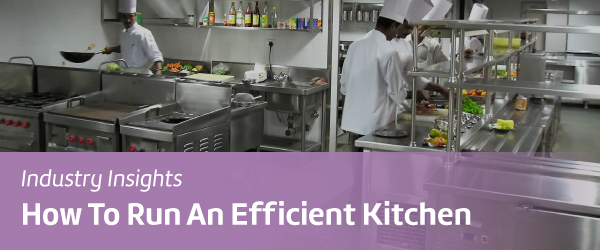Over the past few weeks, we've been researching ways to improve kitchen printing for Change.
It's always been a belief of ours that the best solutions come from conversations out in the field–not from behind a desk. So we visited several kitchens around Des Moines, all varieties, big and small. We walked through their process in the kitchen and they helped us identify ways we could improve their kitchen efficiency.
From this research, we've implemented a few changes to kitchen printing in Change: Version 1.3.2. You can read more about these changes on our Update Log.
We also learned a lot about how to run a kitchen efficiently, so we thought we'd share some of our observations with you, as well as advice from other successful restauranteurs.
Work With Your Staff, Not Against Them
“Stepping back and watching a full service can tell you a lot about the way things are positioned and your crew. I even ask each crew member if I could move anything around to make their lives easier.”
As a boss, your staff looks to you for guidance, but we all have blind spots. Instead of forcing them to do things a certain way, lean on them to help you identify ways to get things done more efficiently. Equip them with the tools and procedures they need to be successful.
As a result, your employees will become more autonomous and make decisions in your best interest instead of stressing you out with every little decision to be made.
Streamline Everything
Your menu and your kitchen need to be compatible. Design your menu around what you have available to you: ingredients, equipment, storage, staff skills, and kitchen layout.
Here are six great tips from Sheila Avila-Zarekari, owner of Z Cafe & Bar in Oakland, California, on how to do this:
- Replace menu items that are overly complicated to prepare.
- Cut your menu down in size so it's more manageable for your kitchen.
- Use fewer ingredients. This will lower inventory costs, labor costs, and make your line faster.
- Purchase the right equipment for your menu. If you are strapped for cash, design your menu around your existing equipment.
- Train and hire the right crew for your kitchen–some people just can't work fast enough.
- Hire an experienced front of house manager. Someone who knows how to pace orders without jamming up the kitchen.
Establish Standards and Protocols
Creating manuals can be a drag, but can save a lot of time and money down the road.
“Employees usually take the blame, but it’s rarely the employees fault in an inefficient kitchen. The system is almost always to blame. I’ve seen so many SOP manuals (Standard Operating Procedures) on shelves collecting dust that kitchen staff have never seen. These should be accessible for employees and, more importantly, regularly updated.”
By creating protocols for everyone to follow, your kitchen staff will know exactly what is expected of them. Everything will become more consistent and faster.
Someone Needs To Be In Charge
To keep the car on the road, someone needs to be behind the steering wheel. In a kitchen, this is usually the expeditor. They are calling the shots and making sure the right dishes get to the right tables. This is often the point person between the front of house and the kitchen.
If an order needs to be changed or feedback relayed to the kitchen, it should all go through one person. This allows your kitchen staff to focus on what they're doing without many distractions.
Don't Let Technology Hinder Communication
Although a good point of sale system can solve a lot of your problems, in almost every kitchen we visited, the front of house staff spoke directly with the kitchen (most often with the expeditor) if something needed to be changed or cancelled. It's faster, more efficient, and more accurate. After a change is communicated to the kitchen, the server would then update the order in the point of sale system.
It's understandable to want technology to do everything, but it can create complex solutions to otherwise simple problems. Sometimes a quick conversation or pen and paper is all you need.

